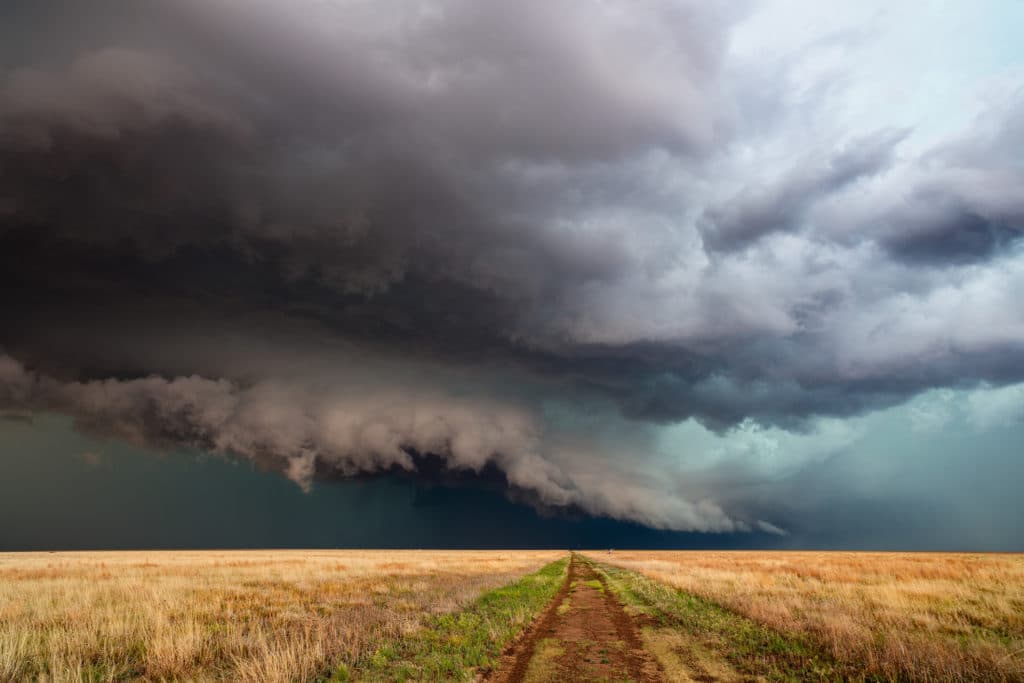
People that live in the Midwest are no stranger to extreme weather. Being a part of “Tornado Alley”, Iowa frequently sees major storm systems roll through that can cause major damage in a short period of time. One such piece of your property that can sustain a lot of damage is the roof of your house. If your roofing is not repaired properly, it could lead to water damage which can lead to even bigger issues.
When is Tornado Season?
Peak tornado season in Iowa is late spring into early summer, with the highest number of tornadoes occurring in the months of May and June. May has particularly active weather patterns due to contrast between the cold air of winter and the warm, moist air of the approaching summer.1 The most common time of day for tornadoes to occur is between 1 p.m. and 8 p.m. However, they can happen at any time.2
Severity of Tornadoes Damage
The amount of destruction that tornadoes cause depends on the severity of the storm system. Weather experts use the Enhanced Fujita Scale (EF) to categorize the strength of the tornado.
The EF Scale categories are as follows:3
EF-0
Wind speeds: 65 to 85 mph.
Typical Observations: Light damage. Peels surface off some roofs; some damage to gutters or siding; branches broken off trees; shallow-rooted trees pushed over.
EF-1
Wind speeds: 86 to 110 mph.
Typical Observations: Moderate damage. Roofs severely stripped; mobile homes overturned or badly damaged; loss of exterior doors; windows and other glass broken.
EF-2
Wind speeds: 111 to 135 mph.
Typical Observations: Considerable damage. Roofs torn off well-constructed houses; foundations of frame homes shifted; mobile homes completely destroyed; large trees snapped or uprooted; light-object missiles generated; cars lifted off ground.
EF-3
Wind speeds: 136 to 165 mph.
Typical Observations: Severe damage. Entire stories of well-constructed houses destroyed; severe damage to large buildings such as shopping malls; trains overturned; trees debarked; heavy cars lifted off the ground and thrown; structures with weak foundations blown away some distance.
EF-4
Wind speeds: 166 to 200 mph.
Typical Observations: Devastating damage. Whole frame houses Well-constructed houses and whole frame houses completely leveled; cars thrown and small missiles generated.
EF-5
Wind speeds: Over 200 mph.
Typical Observations: Incredible damage. Strong frame houses leveled off foundations and swept away; automobile-sized missiles fly through the air in excess of 100 m (109 yd); high-rise buildings have significant structural deformation; incredible phenomena will occur.
How Do Tornadoes Damage Your Roof?
As you can see, the amount of damage that tornadoes cause depends on the strength of the storm. Although most tornadoes in the U.S. are EF0 or EF1, they can still cause damage to your home, roof, and siding with their high winds and ability to move debris or break branches from trees.
After a tornado or a high-wind storm, you should survey your home for damage such as:
- Curled, torn, or missing shingles
- Displaced or damaged gutter, chimney, and roof accents
- Leaks, discoloration, or peeling on the ceilings or walls inside your home
If you notice any of these signs of storm damage you should contact a local roofing professional, such as Des Moines Area Roofing, to evaluate the extent of damage and get a quote to remedy the issues at hand.
Des Moines Area Roofing
We are your roof repair and installation specialists for damaged roofs, leaky tiles, missing shingles, and other types of storm destruction in Iowa. We understand how serious roof damage can be and are here to talk you through the repairs from start to finish. Whether the damage is minor or major, we pride ourselves in our accurate estimates, so you will know how long the work will take to complete.
If you have experienced storm damage to your home, call us at 515-360-7480. We are also available for annual roof inspections that can help detect damages early and save you money in roof replacement costs.
References
https://www.weather.gov/media/dmx/Climate/IowaTorClimatologyFinal2019.pdf
https://weather.com/storms/tornado/news/enhanced-fujita-scale-20130206
